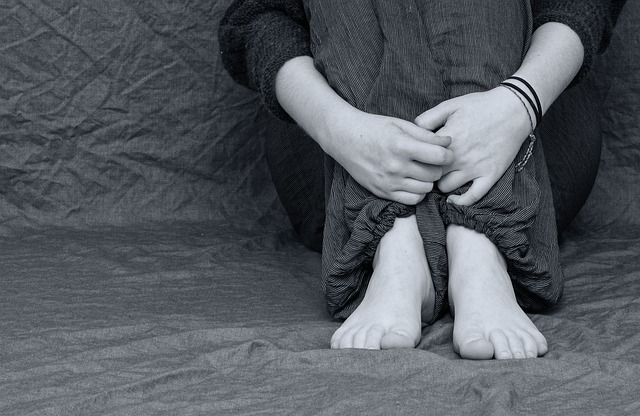By Dr Lyndal Sleep
Research Fellow
Law Futures Centre
If you are in an abusive situation or know someone who is, call 1800 RESPECT. If it is an emergency call 000. You can also call lifeline on 13 11 14 or contact the Safe Futures Foundation.
Access to social security resources is vital to many women who are attempting to be free of an abusive relationship. However, currently, the couple rule in social security law ties women’s access to social security payment to the income and assets of their perpetrator.
The couple rule is used to determine if a social security applicant is separated and/ or single or a member of a couple. If considered a member of a couple, her and her perpetrator’s income and assets are assessed jointly. This may lead to denying payment or, if deciding that she has not declared her relationship, could result in an overpayment debt and/or criminal prosecution for social security fraud.
In applying this rule, domestic violence is rarely treated as an exception. Instead, evidence of domestic violence has been interpreted as evidence for a relationship. Easteal and Emerson-Elliott (2009) observe that the current application of the ‘couple rule’ in Australian social security does not consider contemporary understanding of the realities of domestic violence. For example, it has been found that women tend to make multiple attempts to leave an abusive relationship as part of the complexity of power and control integral to the cycle of domestic violence and abuse (see Domestic Violence Prevention Centre Gold Coast 2015). However, in deciding if a woman was still a member of a couple for social security decision-making purposes, the reality that women tend to make multiple attempts to leave an abusive relationship is rarely considered in the ‘couple rule’. Instead, returning to the relationship has been used as evidence of a continuing commitment. For example, in AAT Matter No 2011/213, the decision-maker decided that Audrey (not her real name) was in a continual relationship with her perpetrator despite accepting that the relationship had now ended and ‘that at various times throughout the subject period Audrey sought unsuccessfully to bring the relationship to an end’ (AAT Matter No 2011/213 [61]).
Here, the relationship was not considered over until the victim did not return to the relationship. This means that Audrey was asked to repay the social security payment she received while attempting to end the relationship — a time when social security financial support, as she attempted to raise her many children independently, would have been crucial (Royal Commission into Family Violence, 2015). It is unlikely that Audrey would have been able to eventually leave the violent relationship without this timely financial support. Although Audrey’s debt was eventually waived, she needed to take her situation through to the Administrative Appeals Tribunal for this to occur. This caused additional stress and risks re-traumatisation of her and her children as her past relationship is assessed in detail to remake the decision.
This reveals serious concerns about the application of the couple rule and the social security appeals process in the context of domestic violence. The current application of the couple rule financially entraps victims in a violent relationship and the appeals process risks re- traumatising the victim/survivor and her children. Further, the rule has been used by perpetrators to further intimidate their victims/survivors by threatening to separate them from their children though imprisonment for social security fraud.
This is in contrast to New Zealand’s similar ‘de-facto rule’, where violence can be interpreted as an indicator of no relationship.
The application of the ‘couple rule’ in the context of domestic violence needs immediate review and reform. So too does the social security appeals process in the context of domestic violence. Without change, Australia’s dual income means-tested social security apparatus is at risk of unintentionally colluding with perpetrators of domestic violence by effectively entrapping and re-traumatising victims/survivors of violent relationships who have turned to it for support.
References
AAT Matter No 2011/213
Domestic Violence Prevention Centre Gold Coast, (2015). The Purple Book, Domestic Violence. Gold Coast: Domestic Violence Prevention Centre Gold Coast
Easteal, P., and Emerson-Elliott, D. (2009). Domestic Violence and Marriage-Like Relationships: Social Security Law at the Crossroads. Alternative Law Journal, 34(3), pp 173.
Royal Commission into Family Violence, Neave, M., Faulkner, P., and Nicholson, T. Royal Commission into Family Violence (2016). [Melbourne]: Government Printer for the State of Victoria.
Acknowledgement
This blog draws from a recently accepted article – L. Sleep (2018) “Entrapment and institutional collusion: domestic violence police reports and the ‘couple rule’ in social security law” Alternative Law Journal – and also the ANROWS funded research project Domestic violence, social security law and the couple rule.
